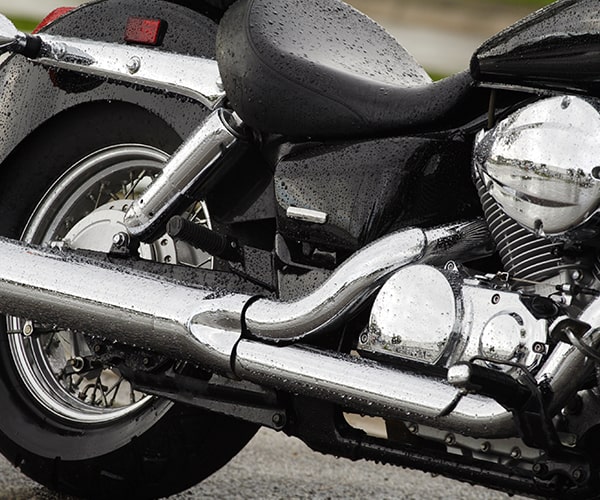Rules for Rainy Rides
You know the saying: spring showers bring summer flowers. But did you know they also bring slippery roads and hazardous riding conditions? For the safest ride, avoid rain. But because that isn’t always possible, make sure you and your bike are prepared.
DON’T LET THE WEATHER RAIN ON YOUR PARADE (LITERALLY)
South Dakota weather is as unpredictable as the roads that wind through the Black Hills. Whether you’re on a cross-state trek or just a quick Saturday cruise, there’s no guarantee you won’t be caught in the rain. Being aware of the potential dangers rainy weather causes is the first step to dodging them. Below is a list of the most common risks and how to navigate them safely.
Reduced Traction
Before you ride, ensure your tires have enough tread and pressure to channel water. An under- or over-inflated tire will react differently in water than when the road is dry.
Heavy rain can expose oils and other slippery substances that reduce traction on your tires. In fact, the first hour of rainfall is the most dangerous time to ride because the oils that rise to the surface are not yet washed away. Which means it would be a great time for a pit stop. Pull over and wait until the rain eases up or has had a chance to wash the road clean of slippery residue. When you’re ready to continue, ride in a vehicle’s tire tracks where water has already been propelled away to gain better traction.
Hydroplaning
A lot of rain can also cause you to hydroplane, which, if we’re getting technical, means a layer of water prevents direct contact between your tires and the road. To reduce your chance of this happening:
- Avoid riding on painted lines, manhole covers, tar snakes and rainbow-hued puddles
- Slow down as much as possible
- Squeeze your clutch and coast through puddles
- Try to maintain your speed and avoid abrupt changes
- Avoid riding during heavy down pours and flash flooding
- Never ride through standing water – it can be deeper than it looks
Decreased Visibility
Wet road conditions present many challenges, but visibility can be your biggest obstacle. Having the right gear can help, but if it’s raining hard enough to hinder your sight, find a spot to pull off and wait for the storm to pass.
Not only can rain restrict your sight, it also restricts the sight of other motorists. Always wear bright, reflective gear to make yourself more easily seen. And if you know you could face rain, wear water-resistant or waterproof clothing, boots and gloves. Layer pieces so you have overlapping seams to keep water out. A full face helmet offers the best protection during a rainy ride.
Extended Brake Time
The wetter the roads, the longer it can take to brake. So if you’re riding in the rain, braking distance should be increased, and turning should be slow and steady. Ride as vertical as possible so your tires have good contact and can whisk away water through the treads. Apply lighter pressure to the front brakes, and compensate by adding more stopping distance.
Lightning
If you’re riding in the rain and see lightning, get off the road immediately. If lightning strikes a car, its metal cage will carry the charge to the ground. On a motorcycle with no cage, it will strike you.

